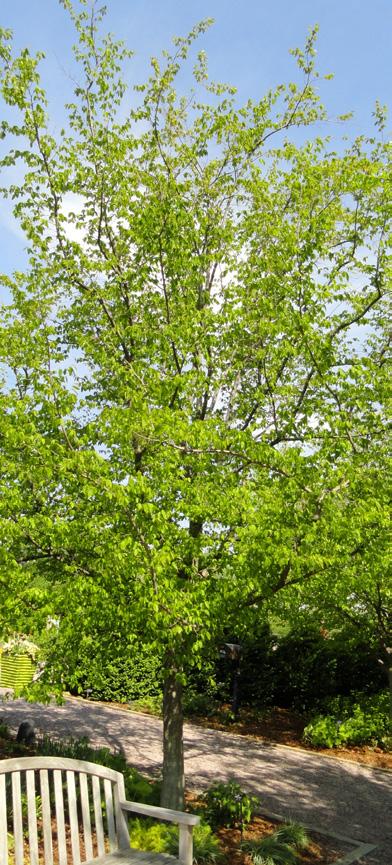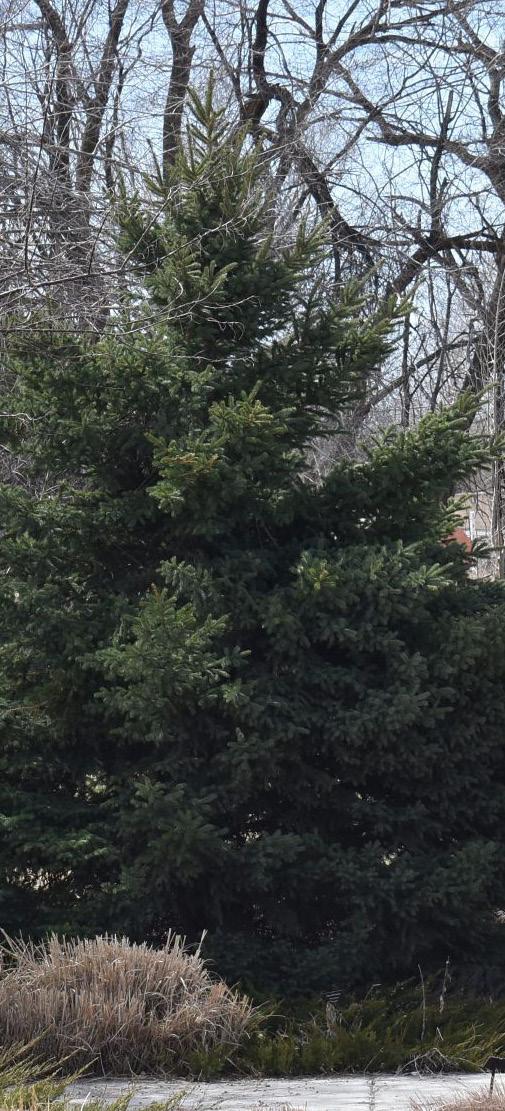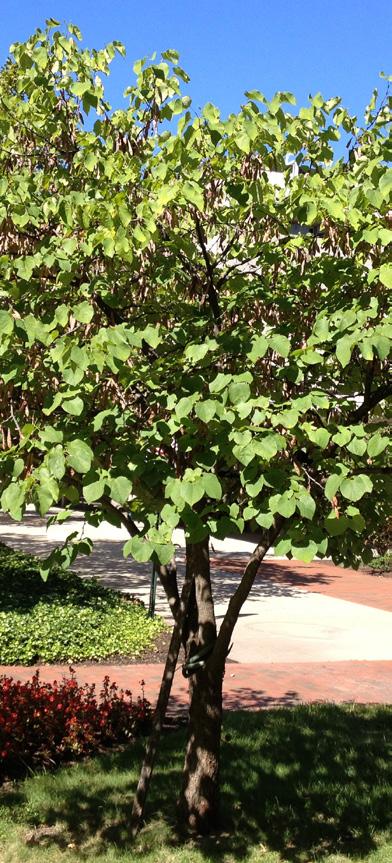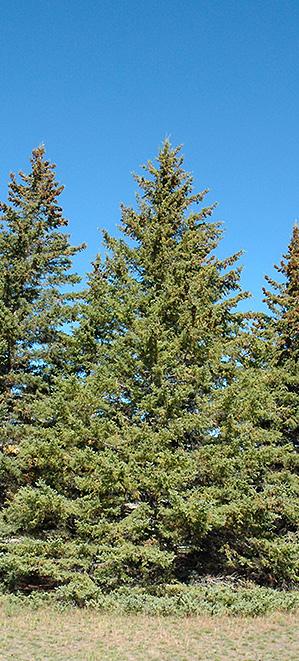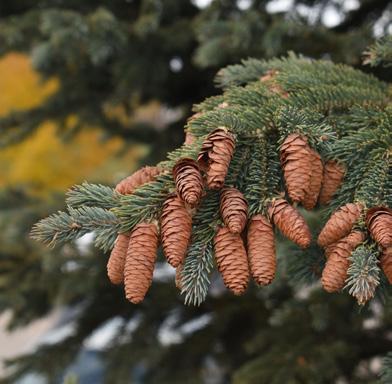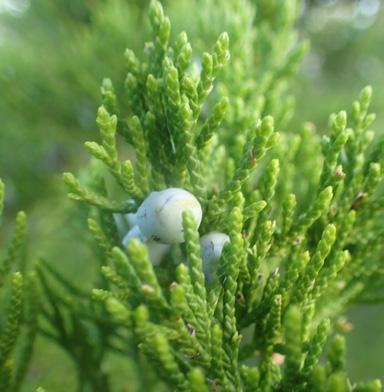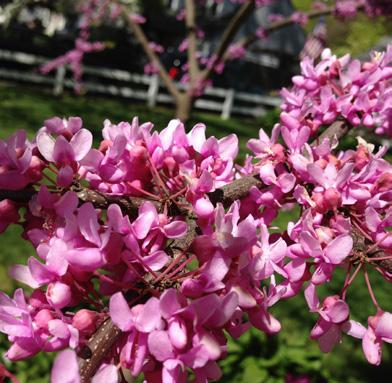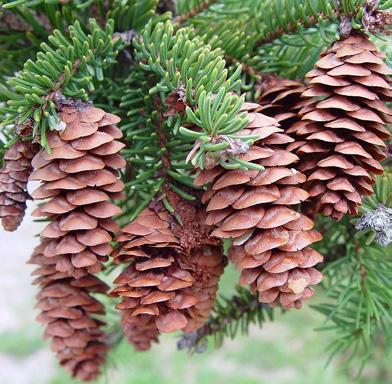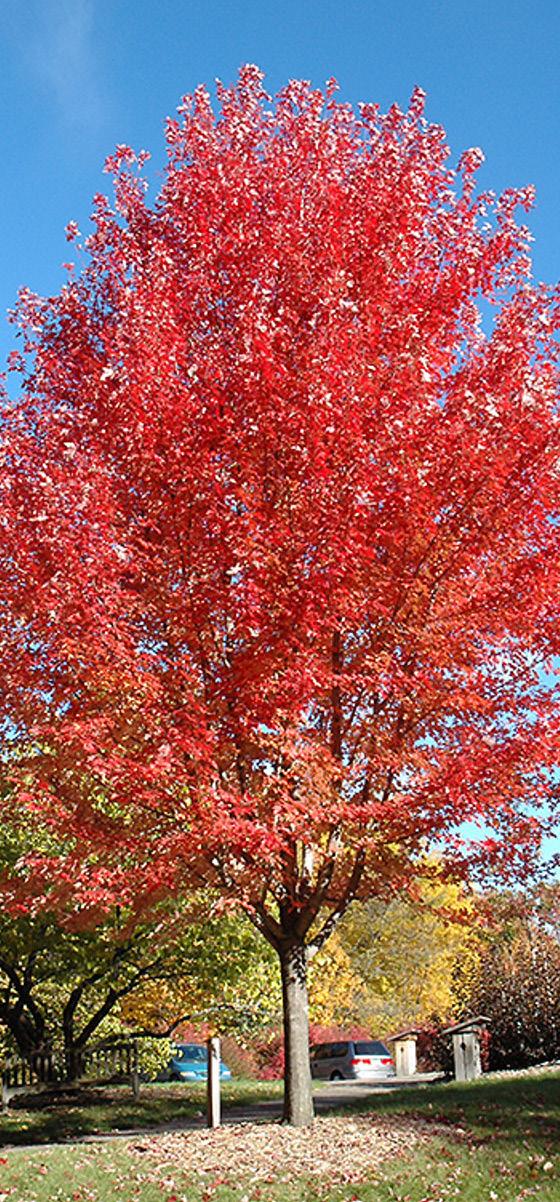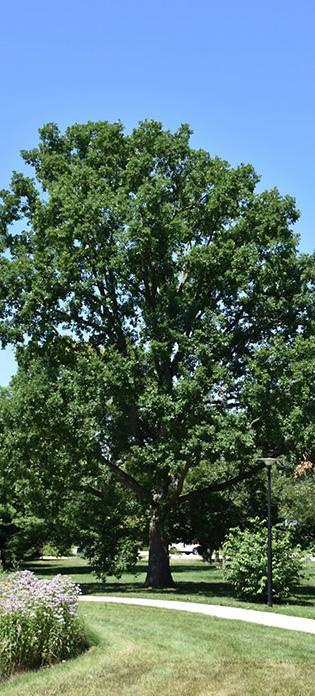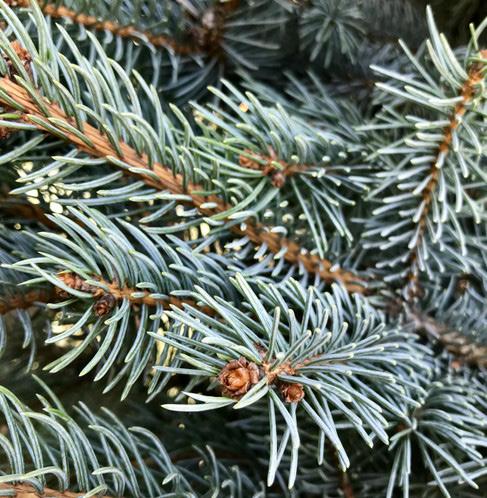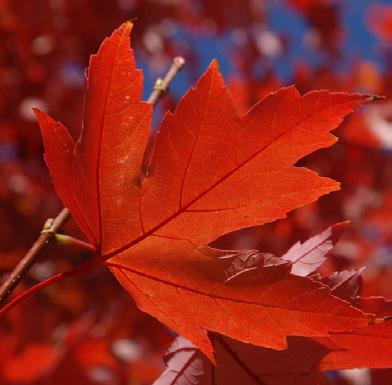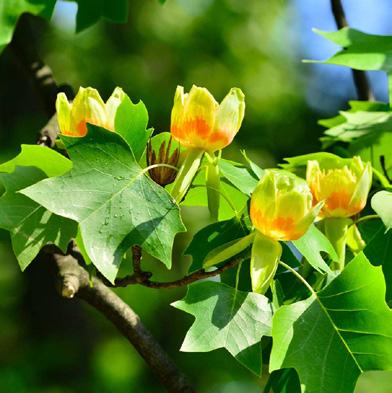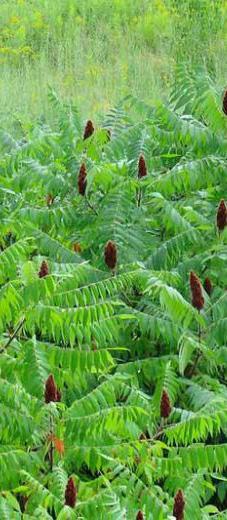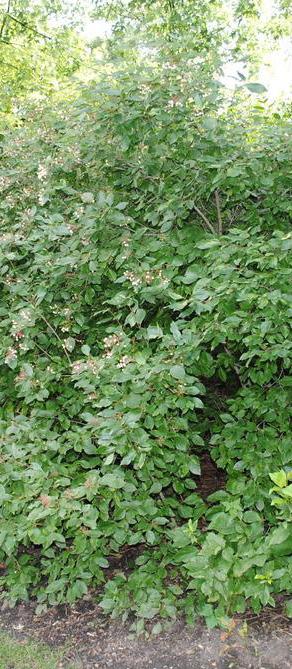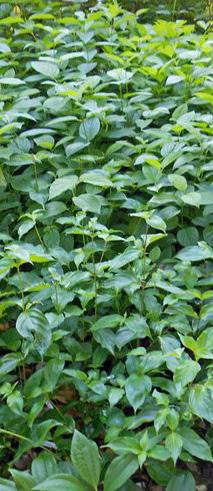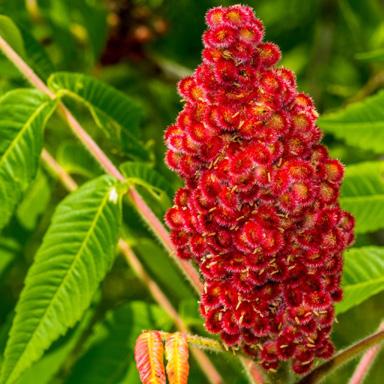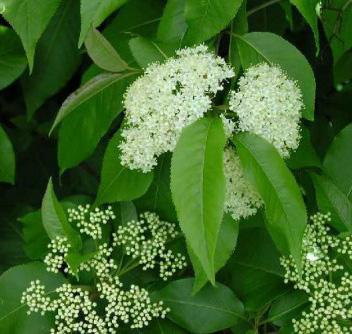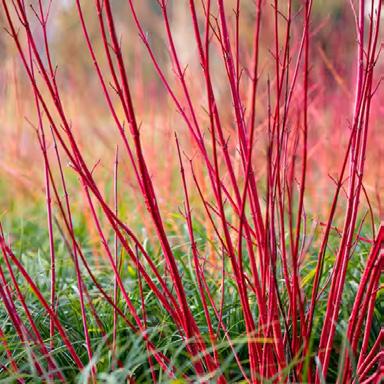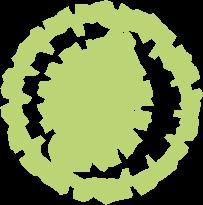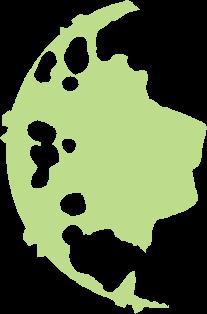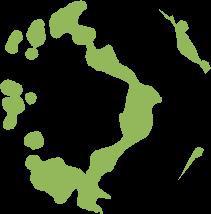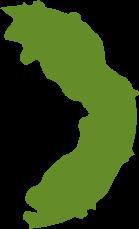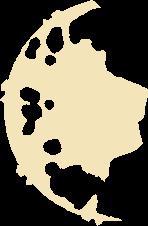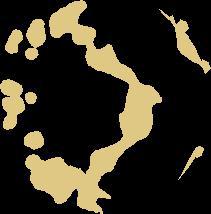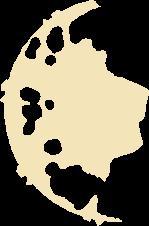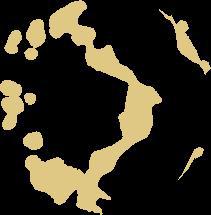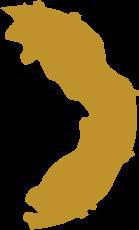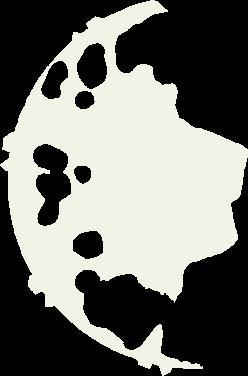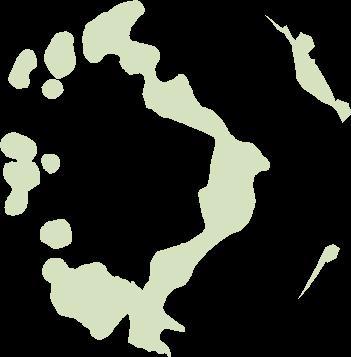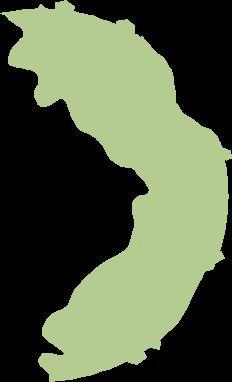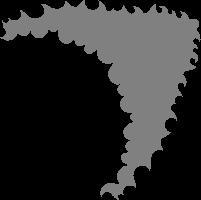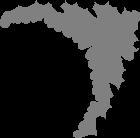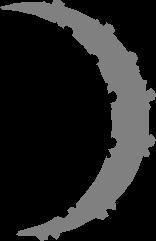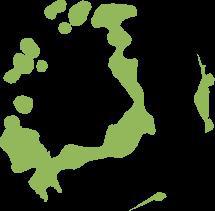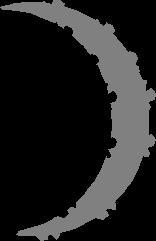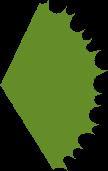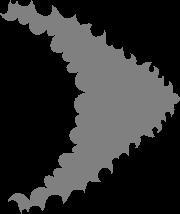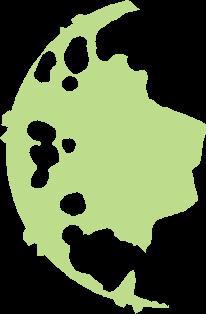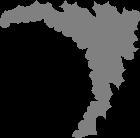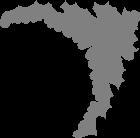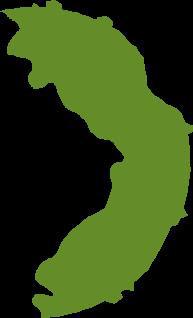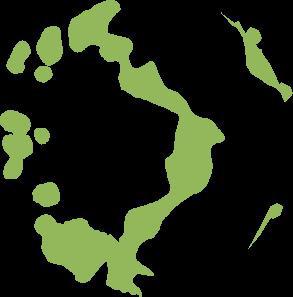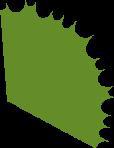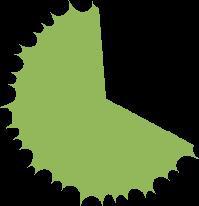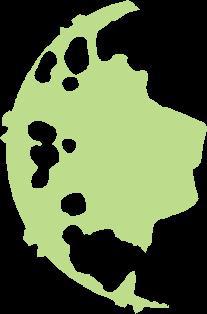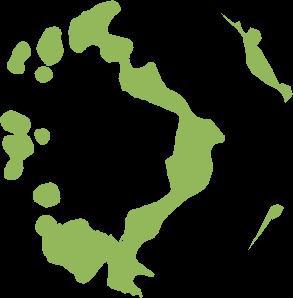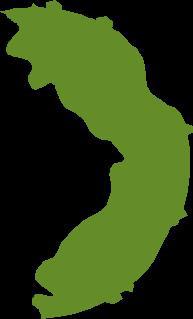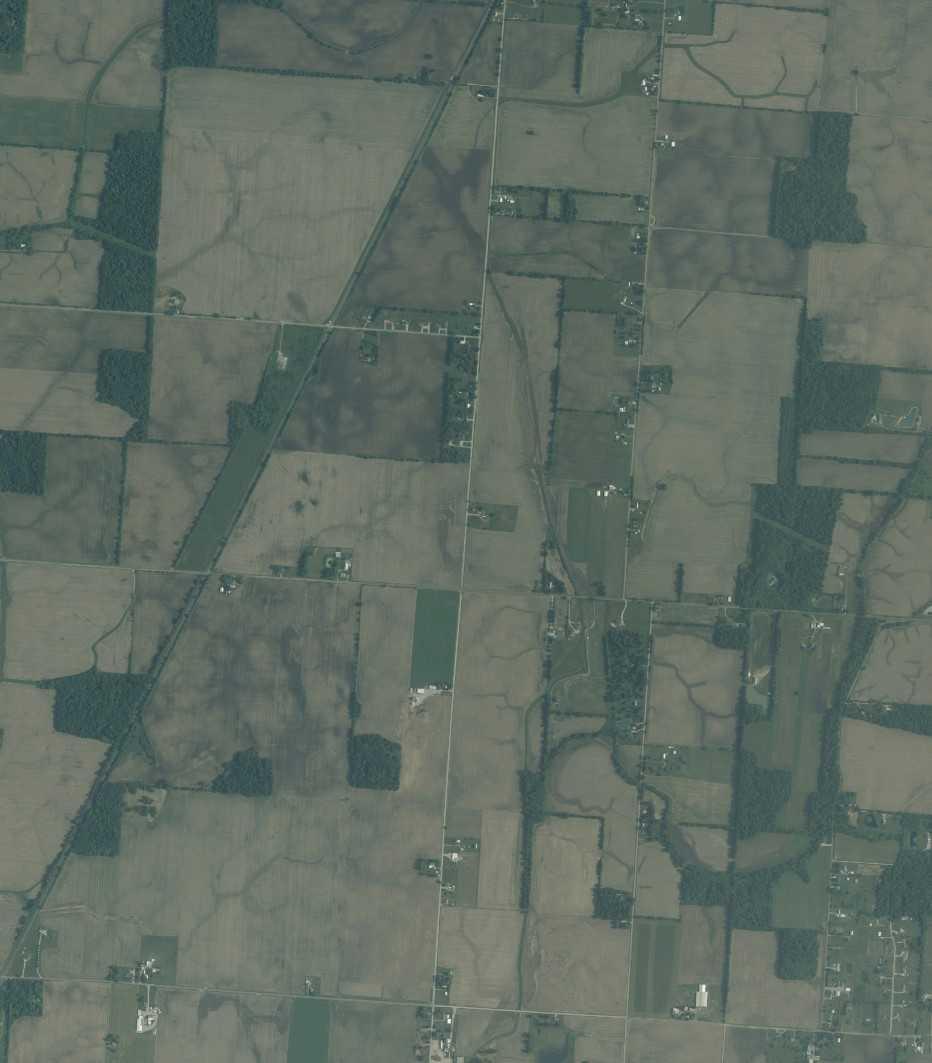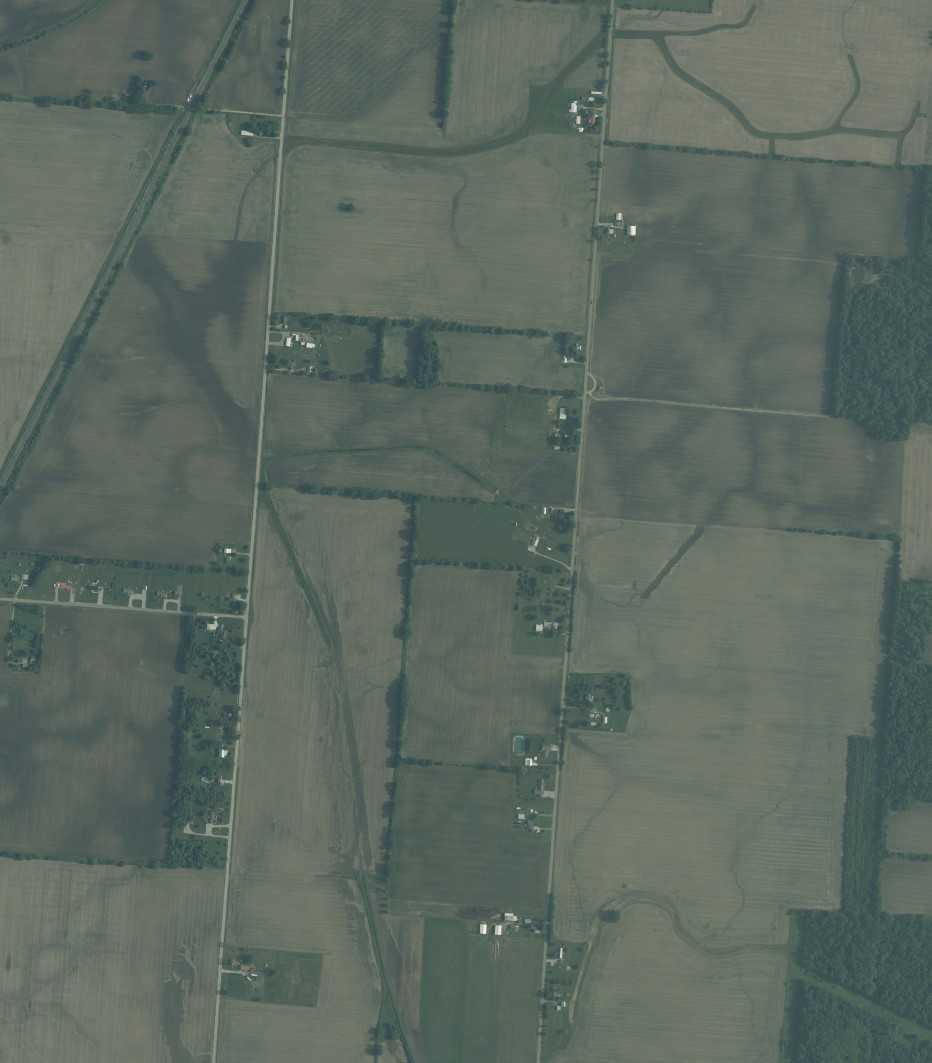Preliminary Landscape Plan
Crossroads Solar Grazing Center
Morrow County, Ohio
Prepared for:
Crossroads Solar, LLC 1105 Navasota Street Austin, TX 78702
Contact: Patrick Buckley, Vice President, Development (713) 962-2933
patrick@openroadrenewables.com
Prepared by:
Environmental Design & Research, Landscape Architecture, Engineering & Environmental Services, D.P.C.
5 E Long St, Suite 700 Columbus, OH 43215 www.edrdpc.com
July 2025
1.0 Introduction
This Preliminary Landscape Plan (“Plan”) has been prepared for the Crossroads Solar Grazing Center (“Crossroads”). Crossroads is proposing to construct a combined utility-scale solar energy and sheep grazing facility in Cardington, Lincoln, and Westfield Townships in Morrow County, Ohio (the “Project” or the “Facility”). The Project will use rows of ground-mounted solar panels to supply up to 94 megawatts AC (MWAC) of wholesale power to the existing electric grid while also providing pasture for livestock. All of the Project’s above-ground infrastructure will be located within agricultural-style fences, which also will confine the livestock and protect them from predators. The fenced area will be up to 559 acres (the “Solar & Grazing Area”) of an area totaling approximately 726 acres (the “Project Area”). Environmental Design & Research, Landscape Architecture, Engineering & Environmental Services, D.P.C. (EDR) has developed this Plan to address the requirement in Ohio Administrative Code 4906-4-09(G)(5), which states that an application for a solar generation facility is to include:
a landscape plan in consultation with a landscape architect licensed by the Ohio landscape architects board that reasonably mitigates the aesthetic impacts of the facility on adjacent residential non-participating properties, the traveling public, nearby communities, and recreationalists through measures such as shrub plantings or enhanced pollinator plantings and be in harmony with the existing vegetation and viewshed in the area.
This Plan, prepared by EDR, was developed under the direction of Landscape Architects licensed by the Ohio Landscape Architects Board. The proposed strategy consists of a sample plant species palette, conceptual arrangements of the sample plant species in three distinct planting modules, and proposed planting module locations intended to address the varied aesthetic impacts of the Facility on adjacent, residential non-participating properties, the traveling public, nearby communities, and recreationalists. These aesthetic impacts are detailed in the Project Visual Resource Assessment (VRA). The strategy avoids the use of nonnatural forms and features such as berms and privacy fences which, while common in some landscape settings, would contrast inappropriately with the largely agricultural landscape surrounding the Facility. The conceptual planting modules within this report are designed to prioritize the use of native plant material that compliments the existing vegetation within and adjacent to the Project Area. The conceptual planting modules are not intended to provide complete screening of the Facility, but rather to provide intermittent screening and softening of views while contributing ecological benefits through the creation of habitat areas for local wildlife, including pollinators. The proposed planting module locations shown in this report have been developed through analysis of Facility visibility from non-participating residences and roadways, with the primary goal of reducing potential visual impacts to resources and receptors adjacent to the Facility.
This Preliminary Landscape Plan was developed using the following strategies:
• Analyze the native and local landscape character, soils, and climatic conditions
• Research regional flora native and/or common to the surrounding area
• Retain existing long-distance views where possible
• Reduce visual contrast of the Facility to the greatest extent practicable
• Implement a predominantly native plant scheme to assimilate the Facility into its surroundings and provide ecological benefits
2.0 Design Methodology, Plant Selection, and Maintenance
Selecting the appropriate visual buffer is dependent on local context. While opaque screening such as uninterrupted fencing or berms may be well suited to some settings, it would not be visually compatible with a rural landscape. Vegetative buffers such as wind breaks and hedgerows, however, have precedent in agricultural and rural landscapes and would not appear out of place in most instances. The use of vegetation for visual impact mitigation mimics the existing hedgerow borders along roadsides and at perimeters of farm fields and residential lots, complementing the visual buffers provided by natural vegetation within and surrounding the greater Project Area.
Existing vegetation within and adjacent to the Project Area consists mainly of agricultural crops, with expansive agricultural fields divided by hedgerows, woodlots, and vegetated riparian corridors along stream channels. These existing vegetative stands have informed the plant material selection for the Plan, which includes deciduous trees such as redbud and American hornbeam, evergreen trees including Eastern red cedar, and a variety of lower-growing spreading shrubs. This Plan is based on the idea that the success of existing native species in the area indicates that conditions may be suitable for newly installed plants of the same species. Because they are well suited for the site-specific climate, these native species often require less maintenance than introduced species.
Species and growth habit diversity within the plantings can enhance cover, food, breeding, and feeding habitat for a variety of wildlife species. Using seed mixes of various native grasses and forbs is an efficient method of improving pollinator habitat and increasing biodiversity in a way that complements the existing landscape, which is largely dominated by a monoculture of agricultural crops. In addition to providing ecological benefits, herbaceous plantings add visual interest to the landscape, both during the growing season and when left to stand over winter, while maintaining open views and vistas. These plantings also help stabilize soils and filter runoff, especially in roadside settings. A pollinator seed mix is proposed within the boundary of each planting module area.
Example plant species with representative photographs are included below. Additional species for potential selection are included in the planting module design sheets shown in Section 3.0 below. A number of sources were used in development of the suggested plant lists, including but not limited to: on-site observation, the USDA PLANTS database (USDA NRCS, 2024a), the Forest Atlas of the United States (Perry et al., 2022), the Ohio Department of Agriculture’s invasive plant list (OAC 901:5-30-01), and the native plant lists provided by the Ohio Department of Natural Resources (ODNR, 2024).
Planting Design Strategy
The Project was developed with design features that work in coordination with various site advantages to lessen the visual impact within the landscape, such as:
• Utilizing low-profile PV panels with a maximum height of 12 feet
• Retaining significant setbacks from roads (150 feet minimum) and residences (300 feet minimum)
• Preserving existing woodlots and hedgerows
• Consolidating project infrastructure
• Siting on flat topography
Together, these measures are anticipated to maximize screening effectiveness where supplemental landscaping is proposed. This Plan is designed with the intent of moderating views of the solar arrays, above ground electrical components, and the associated perimeter fence that may contrast with the existing agricultural landscape, while maintaining the safe and efficient operation of the Facility. Depending on the location and distance of resources adjacent to the Project Area, various plant types and densities are proposed to provide an appropriate level of mitigation. For example, landscaping for a residence adjacent to the Project Area with views focused directly into the Facility may require a more dense planting module (Figure 1) than a local road where only fleeting views of the Facility may be available, requiring less plant material to soften the view (Figure 2). As such, this report includes three preliminary planting modules that vary in density and plant material and are described in detail in Section 3.0.
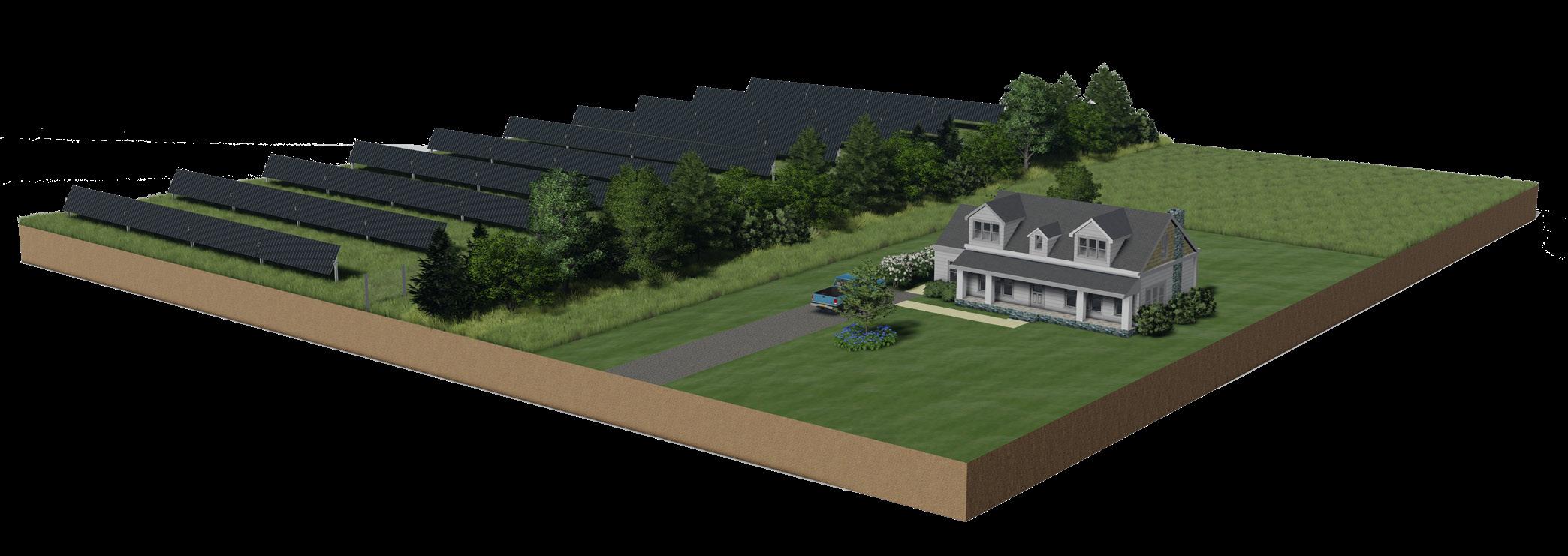
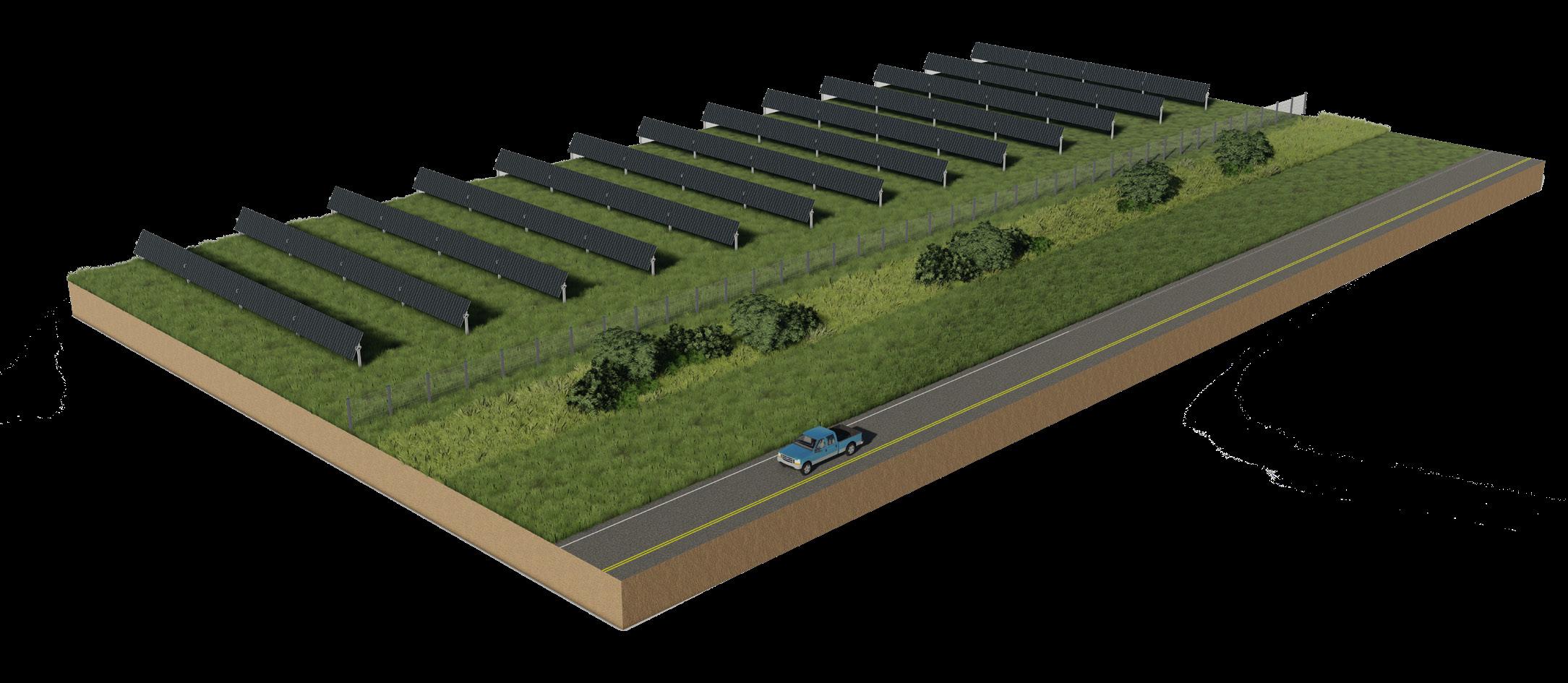
Figure 1. Example of Dense Mitigation Module
Figure 2. Example of Intermittent Visual Mitigation Module
Plant Material Maintenance
The plant material proposed in this report has been selected for its regional compatibility with the existing landscape to lessen the need for prolonged maintenance beyond the period of establishment. However, given the large scale of the project and reliance on existing vegetation for screening in some locations, EDR understands that the Applicant intends to review the condition of plant material after initial installation and protect existing trees to the extent practicable during construction to ensure the intent of the Plan is successfully implemented.1 EDR has developed a conceptual-level Landscape Maintenance Plan for the project, which describes best management practices for the successful establishment of the trees and shrubs to be installed for the visual mitigation planting buffers. EDR recommends that the Applicant conduct periodic mowing within the landscaping buffer areas to assist in the establishment and promote re-propagation of the proposed herbaceous groundcover.
1 This conceptual-level Plan is intended to support permitting efforts only; therefore, this information has not been developed to the level of detail required for bidding and installation of the mitigation plantings. Prior to implementation of the concepts described in this report, EDR recommends that industry-standard construction drawings and specifications be produced by a licensed Landscape Architect. Landscape construction drawings for the contractor should be designed to achieve the visual mitigation goals outlined in this report.
3.0 Planting
Planting Module 2 | Intermittent Screening
Large Shrub, Typ.
Medium Deciduous Tree
Planting Module 2 is designed to be used in areas where there is both potential for visibility and a significant number of viewers present, but where these viewers are not typically stationary or partaking in passive recreational activities. The goal of Planting Module 2 is to visually break up the Facility’s horizontal line resulting from the solar arrays and allow the vegetation and the Facility to blend into the background. Plant species selected include medium deciduous trees, small flowering trees, medium and large shrubs, and an herbaceous groundcover consisting of the pollinator seed mix. A minimum fenceline offset of 10 feet is provided to accommodate routine fence inspections and maintenance. Plant species icons represent the average canopy size for each plant type at maturity, as anticipated for Project conditions.
Small Medium Deciduous Shrub,
Large Shrub, Typ.
Large Shrub, Typ.
Solar Array Area
Solar Array Area
Maintenance Strip
Maintenance Strip
Solar Array Area
Maintenance Strip
Project Perimeter Fence
Project Perimeter Fence
Pollinator Seed Mix
Pollinator Seed Mix
CONCEPT PLANT SCHEDULE FRUIT ALT
Project Perimeter Fence
Medium Deciduous Tree 1
Pollinator Seed Mix
Acer x freemanii / Freeman Maple
Carpinus caroliniana / American Hornbeam
Medium Deciduous Tree
Medium Deciduous Tree
Large Shrub, Typ.
CONCEPT PLANT
Medium Deciduous Tree
Medium Deciduous Shrub, Typ.
Medium Deciduous Shrub, Typ.
Small Flowering Tree
Small Flowering Tree
SCHEDULE FRUIT ALT 2
CONCEPT PLANT SCHEDULE FRUIT ALT 2
Medium Deciduous Tree 1
Medium Deciduous Tree 1
Acer x freemanii / Freeman Maple
Acer x freemanii / Freeman Maple
Carpinus caroliniana / American Hornbeam
Carpinus caroliniana / American Hornbeam
Celtis occidentalis / Common Hackberry
Celtis occidentalis / Common Hackberry
Cladrastis kentukea / American Yellowwood
Ostrya virginiana / American Hophornbeam
Cladrastis kentukea / American Yellowwood
Populus tremuloides / Quaking Aspen
Ostrya virginiana / American Hophornbeam
Populus tremuloides / Quaking Aspen
Acer x freemanii / Freeman Maple
Medium Deciduous Tree 1
Carpinus caroliniana / American Hornbeam
Celtis occidentalis / Common Hackberry
Small Flowering Tree 1
Cladrastis kentukea / American Yellowwood
Amelanchier alnifolia / Serviceberry*
Small Flowering Tree 1
Ostrya virginiana / American Hophornbeam
Asimina triloba / Pawpaw*
Amelanchier alnifolia / Serviceberry*
Populus tremuloides / Quaking Aspen
Cercis canadensis / Eastern Redbud
Asimina triloba / Pawpaw*
Crataegus crus-galli / Cockspur Hawthorn
Cercis canadensis / Eastern Redbud
Crataegus crus-galli / Cockspur Hawthorn
Small Flowering Tree 1
CONCEPT PLANT SCHEDULE FRUIT ALT 2
Amelanchier alnifolia / Serviceberry*
Medium Shrub 11
Aronia melanocarpa / Black Chokeberry*
Asimina triloba / Pawpaw*
Medium Shrub 11
Aronia melanocarpa / Black Chokeberry*
Cornus amomum / Silky Dogwood
Cercis canadensis / Eastern Redbud
Cornus amomum / Silky Dogwood
Cornus sericea / Red Twig Dogwood
Cornus sericea / Red Twig Dogwood
Lindera benzoin / Spicebush
Medium Shrub
Lindera benzoin / Spicebush Large Shrub 2
Crataegus crus-galli / Cockspur Hawthorn
Aronia melanocarpa / Black Chokeberry*
* Indicates forage-friendly plants to be used in areas specified per landowner request.
Parcel Boundary
Celtis occidentalis / Common Hackberry
Parcel Boundary
Medium Deciduous Shrub, Typ.
Small Flowering Tree
Cladrastis kentukea / American Yellowwood
Ostrya virginiana / American Hophornbeam
Populus tremuloides / Quaking Aspen
Small Flowering Tree 1
Amelanchier alnifolia / Serviceberry*
Parcel Boundary
Asimina triloba / Pawpaw*
Cercis canadensis / Eastern Redbud
Crataegus crus-galli / Cockspur Hawthorn
Medium Shrub 11
Aronia melanocarpa / Black Chokeberry*
Cornus amomum / Silky Dogwood
Cornus sericea / Red Twig Dogwood
Lindera benzoin / Spicebush
Large Shrub 2
Cornus racemosa / Gray Dogwood
Rhus typhina / Staghorn Sumac
Salix discolor / Pussy Willow
Sambucus nigra / Black Elderberry*
Viburnum lentago / Nannyberry*
Viburnum prunifolium / Blackhaw Viburnum*
Deciduous Tree
Boundary
CONCEPT PLANT SCHEDULE MOD 3
CONCEPT PLANT SCHEDULE MOD 3
Large Deciduous Tree
CONCEPT PLANT SCHEDULE MOD 3
Large Deciduous Tree
Acer saccharum / Sugar Maple
Acer saccharum / Sugar Maple
Large Deciduous Tree
Acer x freemanii / Freeman Maple
Liriodendron tulipifera / Tulip Poplar
Liriodendron tulipifera / Tulip Poplar
Acer saccharum / Sugar Maple
Large Deciduous Tree
Acer saccharum / Sugar Maple
Quercus alba / White Oak
Liriodendron tulipifera / Tulip Poplar
Quercus alba / White Oak
Acer saccharum / Sugar Maple
Liriodendron tulipifera / Tulip Poplar
Quercus muehlenbergii / Chinkapin Oak
Quercus alba / White Oak
Quercus muehlenbergii / Chinkapin Oak
Liriodendron tulipifera / Tulip Poplar
Tilia americana / American Linden
Quercus alba / White Oak
Quercus alba / White Oak
Tilia americana / American Linden
Quercus muehlenbergii / Chinkapin Oak
Quercus muehlenbergii / Chinkapin Oak
Tilia americana / American Linden
Tilia americana / American Linden
Quercus muehlenbergii / Chinkapin Oak
Tilia americana / American Linden
Medium Deciduous Tree
CONCEPT PLANT SCHEDULE MOD 3
Large Deciduous Tree
Medium Deciduous Tree
Acer x freemanii / Freeman Maple
Acer saccharum / Sugar Maple
Acer x freemanii / Freeman Maple
Acer x freemanii / Freeman Maple
Carpinus caroliniana / American Hornbeam
Medium Deciduous Tree
Medium Deciduous Tree 2
Carpinus caroliniana / American Hornbeam
Liriodendron tulipifera / Tulip Poplar
Acer x freemanii / Freeman Maple
Celtis occidentalis / Common Hackberry
Acer x freemanii / Freeman Maple
Quercus alba / White Oak
Celtis occidentalis / Common Hackberry
Carpinus caroliniana / American Hornbeam
Cladrastis kentukea / American Yellowwood
Carpinus caroliniana / American Hornbeam
Celtis occidentalis / Common Hackberry
Cladrastis kentukea / American Yellowwood
Quercus muehlenbergii / Chinkapin Oak
Carpinus caroliniana / American Hornbeam
Cladrastis kentukea / American Yellowwood
Ostrya virginiana / American Hophornbeam
Celtis occidentalis / Common Hackberry
Celtis occidentalis / Common Hackberry
Tilia americana / American Linden
Ostrya virginiana / American Hophornbeam
Cladrastis kentukea / American Yellowwood
Populus tremuloides / Quaking Aspen
Populus tremuloides / Quaking Aspen
Cladrastis kentukea / American Yellowwood
Ostrya virginiana / American Hophornbeam
Ostrya virginiana / American Hophornbeam
Populus tremuloides / Quaking Aspen
Populus tremuloides / Quaking Aspen
Populus tremuloides / Quaking Aspen
Medium Deciduous Tree
Large Evergreen
x freemanii / Freeman Maple
Abies balsamea / Balsam Fir
Abies balsamea / Balsam Fir
Large Evergreen
Pinus resinosa / Red Pine CONCEPT PLANT SCHEDULE MOD 3
Ostrya virginiana / American Hophornbeam
Abies concolor / White Fir
Abies balsamea / Balsam Fir
Carpinus caroliniana / American Hornbeam
Abies concolor / White Fir
Large Evergreen 4
Abies concolor / White Fir
Picea glauca / White Spruce
Abies balsamea / Balsam Fir
Abies balsamea / Balsam Fir
Picea glauca / White Spruce
Celtis occidentalis / Common Hackberry
Abies concolor / White Fir
Pinus resinosa / Red Pine
Abies concolor / White Fir
Picea glauca / White Spruce
Pinus resinosa / Red Pine
Cladrastis kentukea / American Yellowwood
Pinus resinosa / Red Pine
Picea glauca / White Spruce
Picea glauca / White Spruce
Ostrya virginiana / American Hophornbeam
Pinus resinosa / Red Pine
Populus tremuloides / Quaking Aspen
Small/Medium Evergreen
Abies balsamea phanerolepis
Large Shrub, Typ.
Evergreen, Typ.
Carpinus caroliniana / American Hornbeam
Large Shrub, Typ.
Celtis occidentalis / Common Hackberry
Medium Deciduous Tree, Typ.
Small/Medium Evergreen, Typ.
Cladrastis kentukea / American Yellowwood
Ostrya virginiana / American Hophornbeam
Large Evergreen
Abies balsamea / Balsam Fir
Abies concolor / White Fir
Populus tremuloides / Quaking Aspen
Medium Deciduous Tree, Typ. Medium Shrub, Typ.
Small/Medium Evergreen, Typ.
Large Shrub, Typ.
Picea glauca / White Spruce
Pinus resinosa / Red Pine
Small/Medium Evergreen 4
Small/Medium Evergreen 4
Abies balsamea phanerolepis / Canaan Fir
Abies balsamea phanerolepis / Canaan Fir
Small/Medium Evergreen
Juniperus virginiana / Eastern Red Cedar
Small/Medium Evergreen 4
Abies balsamea phanerolepis / Canaan Fir
Juniperus virginiana / Eastern Red Cedar
Picea glauca `Densata` / Black Hills Spruce
Abies balsamea phanerolepis / Canaan Fir
Abies balsamea phanerolepis / Canaan Fir
Juniperus virginiana / Eastern Red Cedar
Picea glauca `Densata` / Black Hills Spruce
Picea pungens `Fat Albert` / Fat Albert Colorado Spruce
Picea glauca `Densata` / Black Hills Spruce
Juniperus virginiana / Eastern Red Cedar
Juniperus virginiana / Eastern Red Cedar
Picea pungens `Fat Albert` / Fat Albert Colorado Spruce
Abies balsamea phanerolepis / Canaan Fir
Picea pungens `Fat Albert` / Fat Albert Colorado Spruce
Juniperus virginiana / Eastern Red Cedar
Picea glauca `Densata` / Black Hills Spruce
Picea glauca `Densata` / Black Hills Spruce
Picea glauca `Densata` / Black Hills Spruce
Picea pungens `Fat Albert` / Fat Albert Colorado Spruce
Picea pungens `Fat Albert` / Fat Albert Colorado Spruce
Picea pungens `Fat Albert` / Fat Albert Colorado Spruce
Large Shrub 2
Large Shrub 2
Cornus racemosa / Gray Dogwood
Small/Medium Evergreen
Cornus racemosa / Gray Dogwood
Large Shrub
Cornus racemosa / Gray Dogwood
Rhus typhina / Staghorn Sumac
Large Shrub
Rhus typhina / Staghorn Sumac
Abies balsamea phanerolepis / Canaan Fir
Salix discolor / Pussy Willow
Cornus racemosa / Gray Dogwood
Cornus racemosa / Gray Dogwood
Rhus typhina / Staghorn Sumac
Salix discolor / Pussy Willow
Rhus typhina / Staghorn Sumac
Juniperus virginiana / Eastern Red Cedar
Viburnum lentago / Nannyberry
Rhus typhina / Staghorn Sumac
Salix discolor / Pussy Willow
Viburnum lentago / Nannyberry
Picea glauca `Densata` / Black Hills Spruce
Viburnum prunifolium / Blackhaw Viburnum
Salix discolor / Pussy Willow
Salix discolor / Pussy Willow
Viburnum lentago / Nannyberry
Viburnum prunifolium / Blackhaw Viburnum
Viburnum lentago / Nannyberry
Viburnum lentago / Nannyberry
Viburnum prunifolium / Blackhaw Viburnum
Picea pungens `Fat Albert` / Fat Albert Colorado Spruce
Viburnum prunifolium / Blackhaw Viburnum
Medium Shrub
Large Shrub
Aronia melanocarpa / Black Chokeberry
Viburnum prunifolium / Blackhaw Viburnum Medium Shrub
Aronia melanocarpa / Black Chokeberry
Cornus racemosa / Gray Dogwood
Cornus amomum / Silky Dogwood
Aronia melanocarpa / Black Chokeberry
Cornus amomum / Silky Dogwood
Rhus typhina / Staghorn Sumac
Cornus sericea / Red Twig Dogwood
Aronia melanocarpa / Black Chokeberry
Aronia melanocarpa / Black Chokeberry
Cornus amomum / Silky Dogwood
Salix discolor / Pussy Willow
Cornus sericea / Red Twig Dogwood
Lindera benzoin / Spicebush
Cornus amomum / Silky Dogwood
Cornus amomum / Silky Dogwood
Cornus sericea / Red Twig Dogwood
Lindera benzoin / Spicebush
Viburnum lentago / Nannyberry
Lindera benzoin / Spicebush
Cornus sericea / Red Twig Dogwood
Cornus sericea / Red Twig Dogwood
Lindera benzoin / Spicebush
Lindera benzoin / Spicebush
Viburnum prunifolium / Blackhaw Viburnum Medium Shrub
Aronia melanocarpa / Black Chokeberry
Cornus amomum / Silky Dogwood
Cornus sericea / Red Twig Dogwood
Township Road 25
County Road 25
5.0 Conclusion
Mitigation of visual impacts is an important consideration in the development of a solar facility. The Crossroads Solar Grazing Center Preliminary Landscape Plan proposes measures to reasonably mitigate the potential visual impacts associated with the Facility, which are described in the VRA. The three proposed planting modules provide potential visual mitigation options that could be incorporated into the project. The selection of native plant species further enhances ecological benefits through habitat creation and increased biodiversity. However, circumstances such as inappropriate planting, the presence of utility conflicts, availability/condition of species at the time of procurement, and input from the project stakeholders (such as adjacent landowners) may require alterations or substitutions to the proposed materials, or result in plant material decline or loss.
6.0 References
Ohio Department of Natural Resources. 2024. Native Plant Lists. Available at: https://ohiodnr.gov/ discover-and-learn/safety-conservation/about-ODNR/nature-preserves/Documents/native-plants-lists
Perry, Charles H.; Finco, Mark V.; Wilson, Barry T., eds. 2022. Forest Atlas of the United States. FS-1172. Washington, D.C.: U.S. Department of Agriculture, Forest Service. 94p.
USDA, NRCS. 2024a. The PLANTS Database. National Plant Data Team, Greensboro, NC 27401-4901 USA. Available at: http://plants.usda.gov
USDA, NRCS. 2024b. Web Soil Survey. Soil Survey Staff. Available at: http://websoilsurvey.sc.egov.usda.gov/
USDA, 2023. Plant Hardiness Zone Map. Agricultural Research Service, U. S. Department of Agriculture. Available at https://planthardiness.ars.usda.gov/




